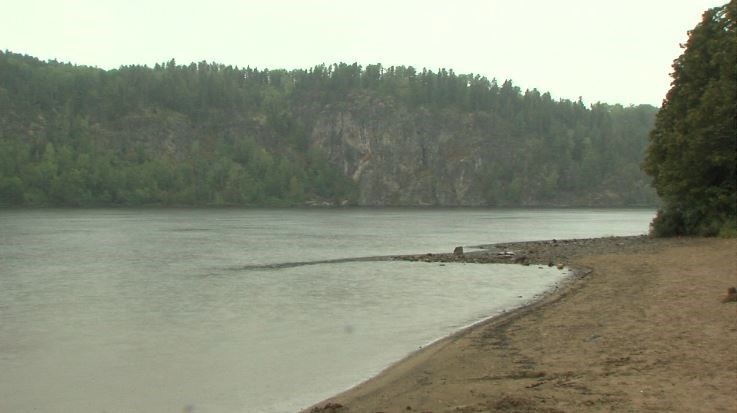THUNDER BAY — A spokesperson for the Thunder Bay District Health Unit says it will take a few days for tests to determine whether the blue-green algae discovered at Hawkeye Lake recently is a toxic variety that poses a threat to human health.
The Ontario environment ministry is leading the investigation, which was initiated after algae blooms were discovered in the popular cottage lake 45 kilometres north of the city.
Lee Sieswerda, Manager of Environmental Health for TBDHU, says the health unit's "understanding from the ministry is that it was widespread throughout the lake."
Blue-green algae (cyanobacteria) blooms develop on a water body's surface and look like green pea soup or teal-coloured paint.
In an interview Monday, Sieswerda described the algae as naturally-occurring in lakes and streams, but in certain conditions such as warm, shallow water they can rapidly grow into blooms which may produce toxins.
Ingesting or contacting the toxic variety can lead to symptoms including gastrointestinal illness, irritation, hives, rash, blisters or asthma-like symptoms.
It has the potential to be fatal to humans, Siewswerda said, but pets may be particularly susceptible.
News of the situation at Hawkeye Lake has caught the attention of a Lakehead University researcher
Nathan Wilson was involved in a project four years ago that identified blue-green algae blooms in Cloud Lake, south of Thunder Bay.
Wilson said it wouldn't necessarily be surprising to find cyanobacteria in any area lake, but blooms are still rare in the district.
"Depending on what kind of bloom it is, it might start to draw in some questions as to what problematic symptoms might be going on in (Hawkeye) Lake."
Until now, Wilson said, cyanobacteria haven't been monitored "because of the notion that it wasn't a problem here."
His current research project may provide guidance on how to manage any threat from algae blooms in the future.
TBDHU officials say rising water temperatures may make blooms more common.
Hawkeye Lake resident upset with how the notice of the investigation was handled
One long-time resident of Hawkeye Lake is criticizing the way information about the situation has been released.
Mary Anne Comuzzi said issuing a press release with no notice late on a Friday afternoon was not appropriate.
"The alarm bell was rung before we were given information...people have packed up and gone to town," Comuzzi said Monday afternoon in an interview.
"You don't drop this on our laps and tell us the severity of it and not have it confirmed that, yes, it is toxic. They haven't determined that yet."
Comuzzi complained that residents were left with no avenue to seek more information over the weekend when government offices are closed..
"I think the whole release was very poorly done," she said.
Comuzzi also takes issue with the statement that blue-green algae is widespread around the lake.
She said a ministry representative told her that testing of the water had only been done at Kay's Landing, a boat launch near the middle of the lake.
"Our lake is seven miles long. You're testing one area," she added.
Tbnewswatch sought clarification about the location of algae blooms earlier Monday from the ministry, but has not yet received a response.
TBDHU advises anyone spotting a suspected bloom in any area lake to contact the Ontario Spills Action Centre at 1-800-268-6060.
If you come into contact with blue-green algae, you should wash your skin with soap and water.
